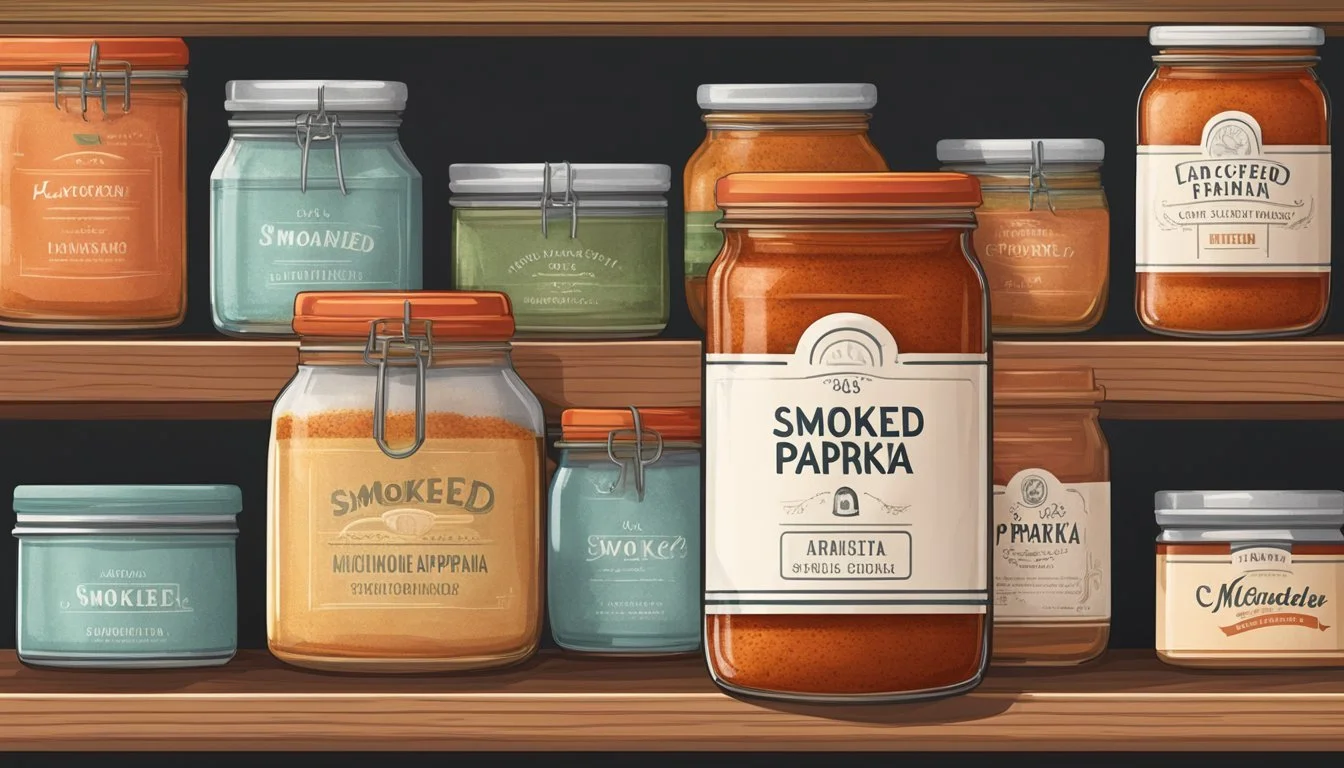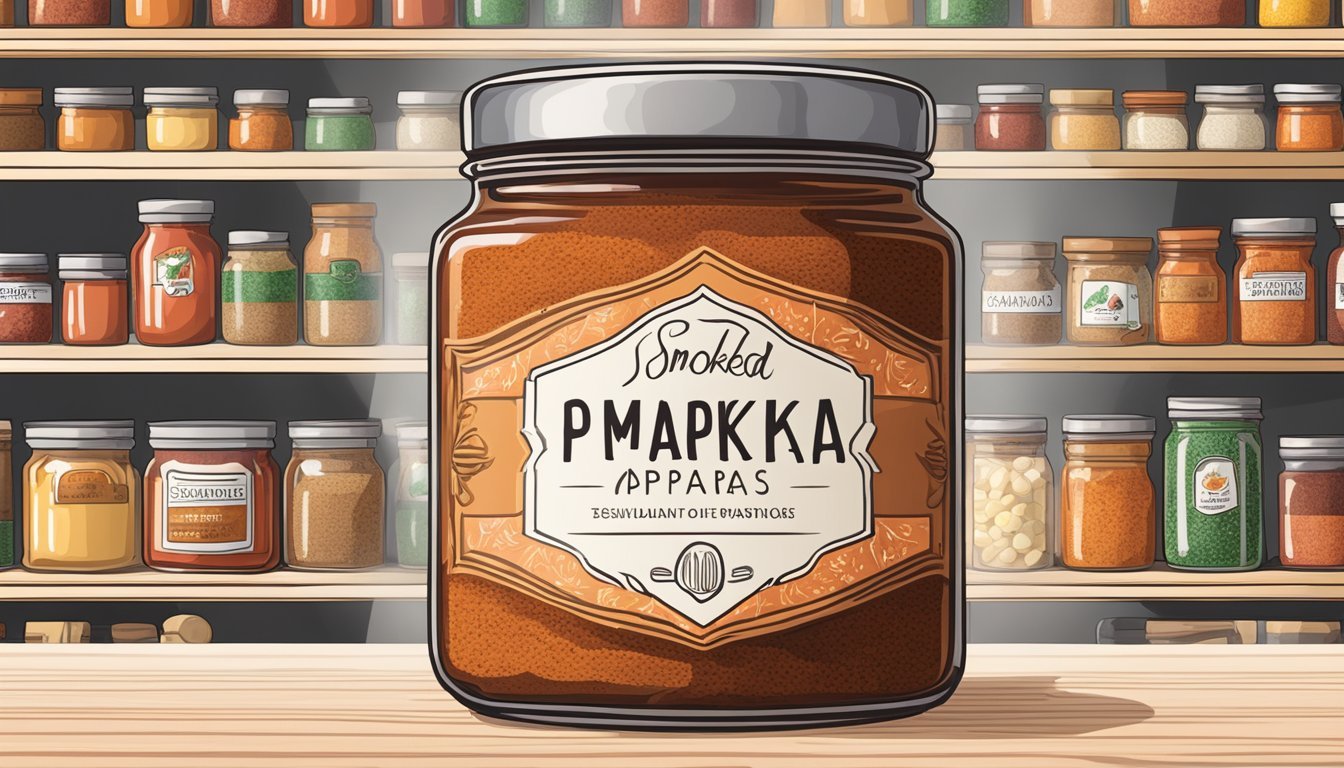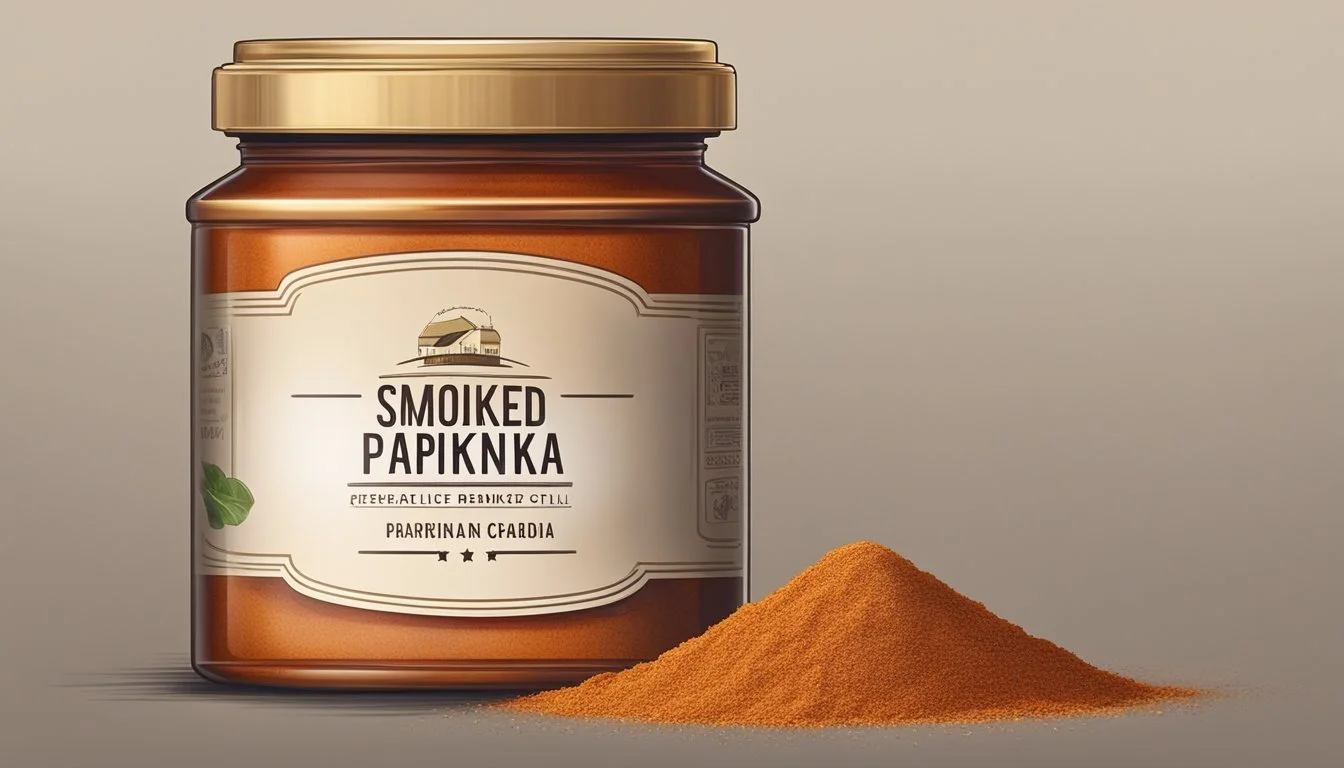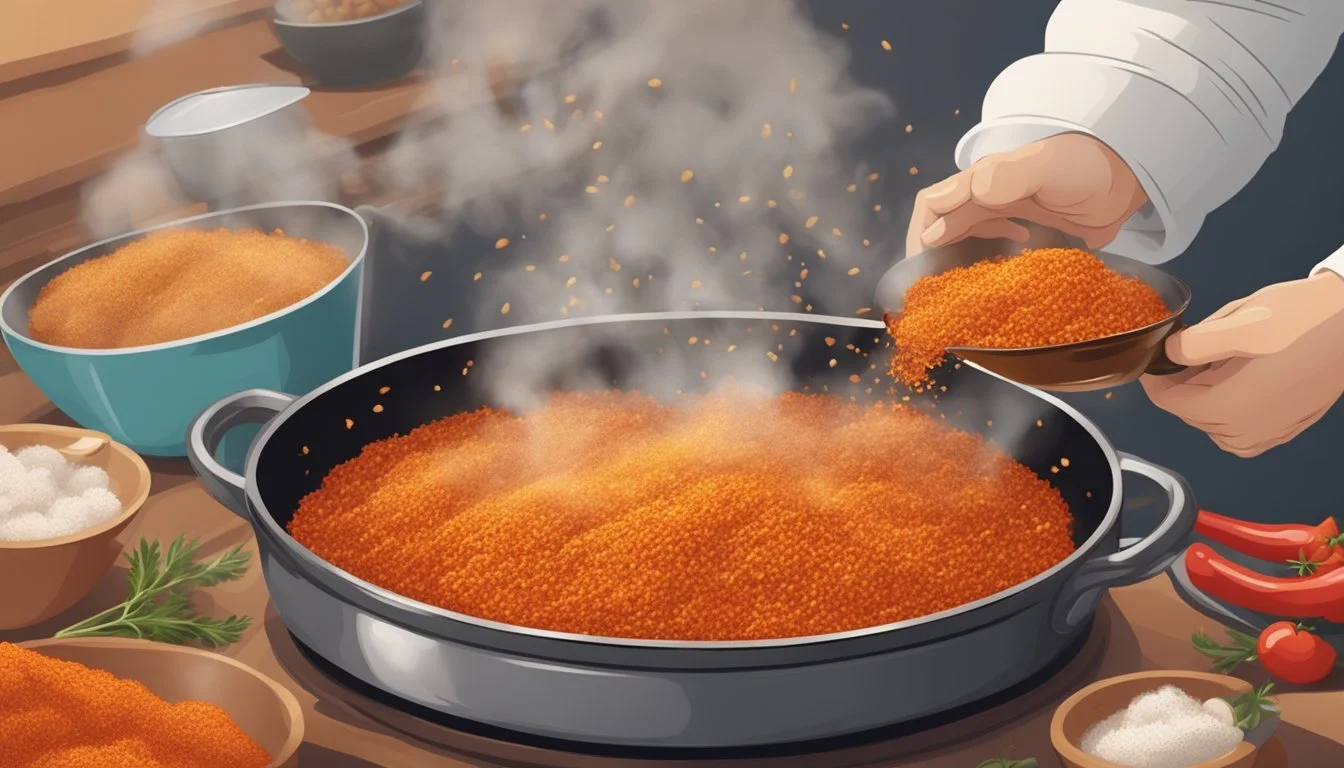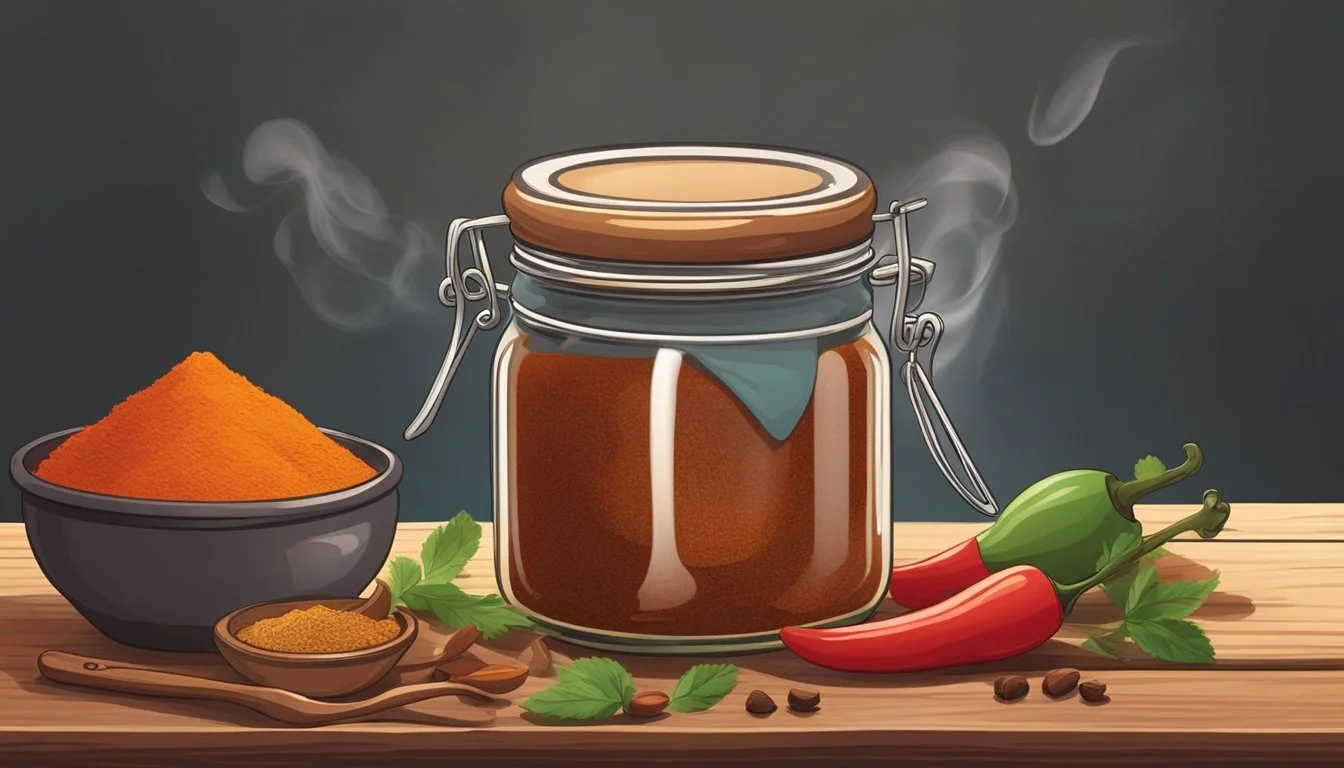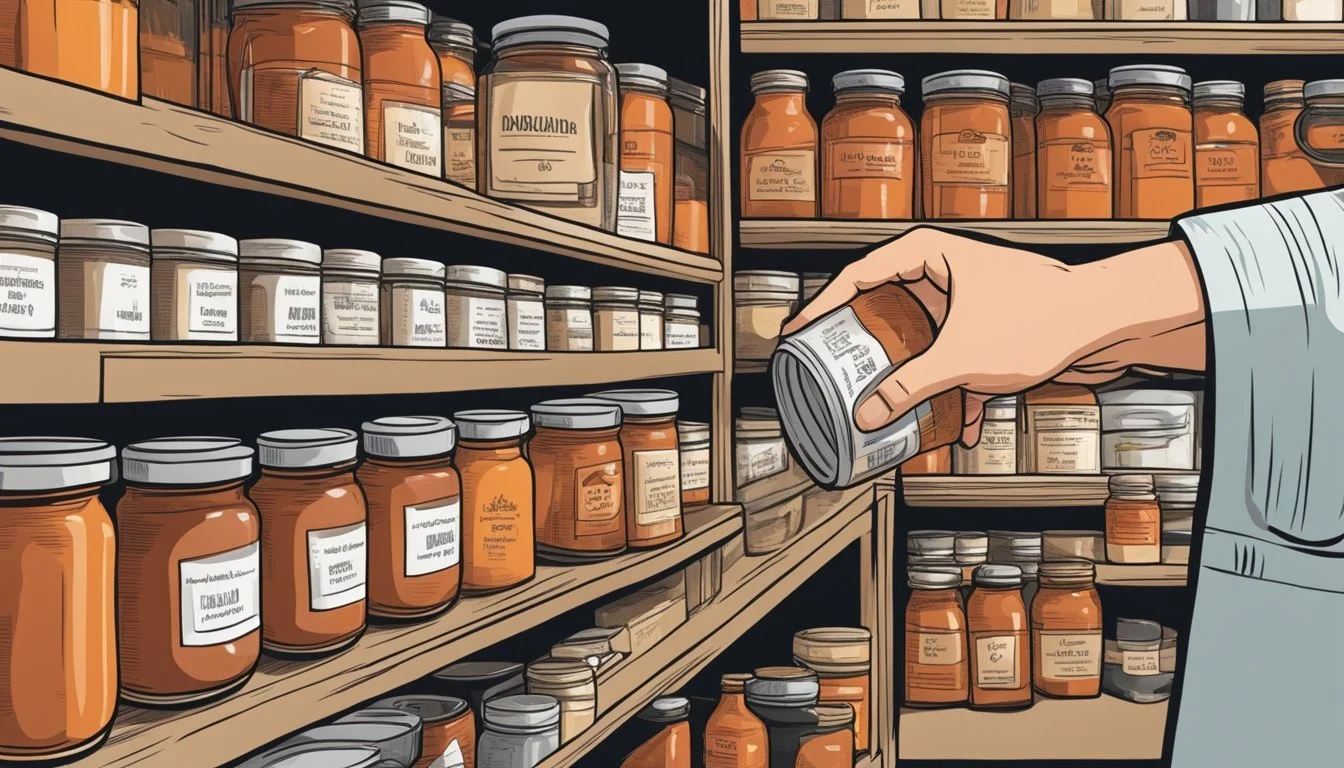Does Smoked Paprika Go Bad?
Shelf Life and Storage Tips
Smoked paprika is a beloved spice that adds depth and smokiness to a variety of dishes, but many wonder about its shelf life. Yes, smoked paprika can go bad, but not in the typical way that perishable foods do. Over time, smoked paprika will gradually lose its vibrant color, aroma, and potency.
Stored properly, smoked paprika can maintain its quality for up to three years. To prolong its shelf life, store it in a cool, dark place or even refrigerate it to preserve its flavor and intensity. Awareness of these storage tips ensures you get the most out of this versatile spice.
Detecting when smoked paprika has gone bad is crucial for maintaining the best flavors in your cooking. Look for changes in color, a diminished aroma, and a loss in flavor intensity. By following proper storage guidelines, you can enjoy the distinctive taste of smoked paprika for as long as possible.
Understanding Smoked Paprika
Smoked paprika, a key ingredient in many culinary traditions, offers a distinct smoky flavor and aromatic complexity. It comes in different varieties, each with unique characteristics and culinary uses.
Origins and Varieties
Smoked paprika, known as pimentón in Spanish cuisine, originates from Spain and Hungary. Spanish paprika is often dried using oak wood, giving it its characteristic smokiness. There are three main types: dulce (sweet), agridulce (bittersweet), and picante (hot).
Hungarian paprika, though less commonly smoked, also offers several varieties. They include pimento, a sweet variant, and hot versions that cater to diverse taste preferences.
Flavor Profile
The flavor of smoked paprika is rich and complex. It combines smoky undertones with a fruity and slightly earthy base. The smokiness comes from the drying process over oak wood, which distinguishes it from regular paprika.
Depending on the variety, the spice can range from sweet to hot. Sweet paprika has a mild flavor, while hot paprika delivers a sharper heat. This versatility makes it suitable for enhancing the depth of many dishes, from Spanish paella to Hungarian goulash.
Health Benefits
Smoked paprika offers various health benefits. It is rich in vitamin A, which supports vision and immune function, and vitamin E, an antioxidant that helps protect cells. The spice also contains capsaicin, known for its anti-inflammatory properties.
Regular consumption may aid metabolic health due to its spice content. Additionally, smoked paprika is low in calories and can add a burst of flavor without adding unhealthy fats or sugars, making it a valuable addition to a balanced diet.
Storing Smoked Paprika
Properly storing smoked paprika can significantly extend its shelf life and preserve its flavor. Key factors include maintaining the right storage conditions and selecting between refrigeration and pantry storage.
Ideal Storage Conditions
Smoked paprika should be stored in a cool, dark place to maintain its flavor and potency. Airtight containers are essential, as they help to keep out moisture and humidity, which can cause the spice to clump or lose its aroma.
Glass jars and plastic containers with tight-fitting lids work well for this purpose. Avoid placing smoked paprika near heat sources like stoves or ovens, as heat can degrade the spice quickly. A spice cabinet or dedicated section of the pantry can be ideal locations.
Humidity and direct sunlight should be avoided to keep the spice from deteriorating.
Refrigeration vs. Pantry
Refrigeration can extend the shelf life of smoked paprika significantly. When stored in the fridge in an airtight container, the spice can retain its quality for 6 to 12 months. The cool temperature slows down the degradation process, preserving its flavor.
On the other hand, a pantry can still be a good option if the spice is used frequently. In a pantry, smoked paprika typically lasts about 3 to 6 months. Ensure the pantry is cool and dark to maximize the spice's shelf life.
For even longer storage, smoked paprika can be stored in the freezer. When kept in the freezer in an airtight container, it can maintain its quality for up to 2 years. This method effectively protects the spice from both heat and moisture.
Signs of Spoilage
To determine if smoked paprika has gone bad, look for changes in its appearance, texture, aroma, and flavor. Observing these signs can help ensure the spice maintains its quality and potency.
Visual and Textural Changes
Smoked paprika should have a vibrant color and smooth texture. Visual signs of spoilage include faded color and the presence of clumps. The spice may also appear dull and lack its initial luster.
Excessive moisture can cause smoked paprika to form clumps and potentially develop mold. If mold is visible, discard the spice immediately. Clumping often results from improper storage or high humidity.
Ensure it is stored in a cool, dark place to maintain its quality. For prolonged freshness, the fridge can be an ideal storage environment.
Aroma and Flavor Detection
The aroma of fresh smoked paprika should be rich and slightly smoky. If it has an off smell or reduced potency, it's likely past its prime.
To test its flavor, taste a small amount. Fresh smoked paprika is robust, while spoiled paprika will have a muted intensity. The presence of any off flavors indicates it should be discarded.
Maintaining freshness helps in retaining its quality and vibrancy. Ensuring proper storage conditions is key to preserving its aroma and flavor.
By paying attention to these details, you can ensure your smoked paprika remains at its best for as long as possible.
Maximizing Smoked Paprika's Shelf Life
Proper storage and handling ensure that smoked paprika remains fresh and flavorful. Key considerations include using appropriate packaging, avoiding contamination, and paying attention to expiration and best before dates.
Proper Packaging
Using airtight containers can significantly extend smoked paprika’s shelf life. Glass jars with tight-fitting lids or vacuum-sealed bags are excellent choices. Preventing exposure to air minimizes oxidation, which degrades the spice's quality.
Opaque containers are preferable to translucent ones as they block out sunlight, which can deteriorate the spice. Keeping the spice in a cool, dark place, such as a pantry or cupboard, further helps in retaining its freshness.
Preventing Contamination
Avoiding contamination is critical in preserving smoked paprika. Always use a clean, dry spoon to scoop out the spice. Moisture can lead to mold growth and bug infestation, which can ruin the entire container.
It's wise to store smoked paprika away from areas with high humidity like over the stove or dishwasher. Sealing the container immediately after use prevents cross-contamination with other spices or food particles.
Expiration and Best Before Dates
Smoked paprika generally comes with a best-before date rather than a strict expiration date. While it doesn’t go bad in a way that makes it unsafe to eat, its flavor and potency can diminish over time. Ground spices, including smoked paprika, typically retain optimal flavor for 6 to 12 months if stored correctly.
To keep track, label containers with the purchase date. Additionally, smelling or tasting a small amount can help determine if it has lost its characteristic flavor and aroma. Proper storage can extend usability beyond the suggested dates, ensuring the spice remains a valuable kitchen staple.
Using Smoked Paprika in Cooking
Smoked paprika adds a rich, smoky depth to a variety of dishes. It is a versatile spice that can enhance the flavor profile of your culinary creations, including soups, stews, marinades, and sauces.
Culinary Applications
Smoked paprika is a staple in Spanish cuisine and works wonderfully in dishes like paella and chorizo. It adds an earthy smokiness to soups and stews, giving them a deeper flavor. This spice is also ideal for Hungarian goulash and can be used to season meats, vegetables, and rice dishes.
Smoked paprika can serve as a fantastic dry rub for meats, especially for barbecuing or grilling. It mixes well in marinades, imparting a smoky essence that pairs well with chicken, pork, and beef. In sauces, it can add a subtle heat and complexity. For a unique twist, try adding a pinch to a tomato sauce or chili to elevate the dish's overall flavor.
Substitutes for Smoked Paprika
If smoked paprika is not available, there are various substitutes that can mimic its flavor profile. Chipotle powder is an excellent alternative, offering both smokiness and heat. For a milder option, use plain ground paprika combined with a touch of cayenne pepper to add some heat.
Another option is to use a variety of smoked peppers, like Spanish paprika. For those who enjoy experimenting, mixing a mild paprika with a bit of liquid smoke can also achieve a similar effect. These substitutions help ensure you can maintain the intended flavor of your dish even in the absence of smoked paprika.
Consider purchasing smoked paprika in a glass jar to keep it fresh, or look for it at specialty food stores or online to ensure you always have this versatile spice on hand.
Innovative Ways to Enjoy Smoked Paprika
Smoked paprika adds a unique smoky flavor to a variety of dishes. It can enhance the taste of marinades, sauces, and even simple dishes like rice or stews.
Recipe Ideas
1. Smoky Chicken Marinade
Combine smoked paprika, garlic powder, onion powder, and oregano with olive oil. Use this blend to marinate chicken breasts or thighs for an hour before grilling or baking. The smoked paprika imparts a rich, smoky flavor that makes the chicken taste like it’s been cooked over a wood fire.
2. Spanish Rice
Stir smoked paprika into the cooking water when making rice. Adding chorizo and bell peppers can further elevate the dish. The spice gives the rice a vibrant color and a depth of flavor that makes it stand out as a side or main dish.
3. Vegan Stew
Enhance the flavor of vegetable stews by adding smoked paprika. Mix it with cumin, oregano, and thyme. The spice acts as a flavor enhancer, bringing a meaty, smoky essence to the dish without any animal products, making your stew hearty and satisfying.
4. Versatile Sauce
Create a sauce by mixing smoked paprika with mayonnaise, garlic, and lemon juice. This sauce can be used as a dip for fries, a spread for sandwiches, or a topping for grilled meats. The smoky notes add complexity to the sauce, making it versatile.
5. Garnish for Roasted Vegetables
Sprinkle smoked paprika over roasted vegetables like potatoes, carrots, or cauliflower. The spice adds a smoky, slightly sweet flavor, making the veggies more interesting and flavorful. It also acts as a colorful garnish, enhancing the appearance of the dish.
Purchasing and Selecting Quality Smoked Paprika
For the best smoked paprika, it's important to focus on quality indicators and know where to make your purchase.
Identifying High-Quality Smoked Paprika
To identify high-quality smoked paprika, look for a vibrant reddish color, which indicates freshness and proper storage. The aroma should be robust and smoky, not stale or faint.
Check for fine grinding—good smoked paprika should have a smooth, even texture. Examine the packaging for any information about its origin, as Spanish paprika ("Pimentón de la Vera") and Hungarian paprika are renowned for their superior quality.
Packaging should be airtight to maintain freshness and flavor. Avoid bulk purchases from jars that are frequently opened, as exposure to air can degrade the spice's quality.
Where to Find Smoked Paprika
High-quality smoked paprika is available at specialty spice shops, well-stocked grocery stores, and online retailers.
When buying online, choose sellers with positive reviews focusing on freshness and quality. Farmers' markets can also be a good place to find smoked paprika, as vendors often source directly from producers, ensuring freshness.
Look for spice shops that offer a variety of paprikas, including regular paprika and its smoked varieties. Well-known brands or those specializing in Spanish or Hungarian spices are usually a safe bet.

